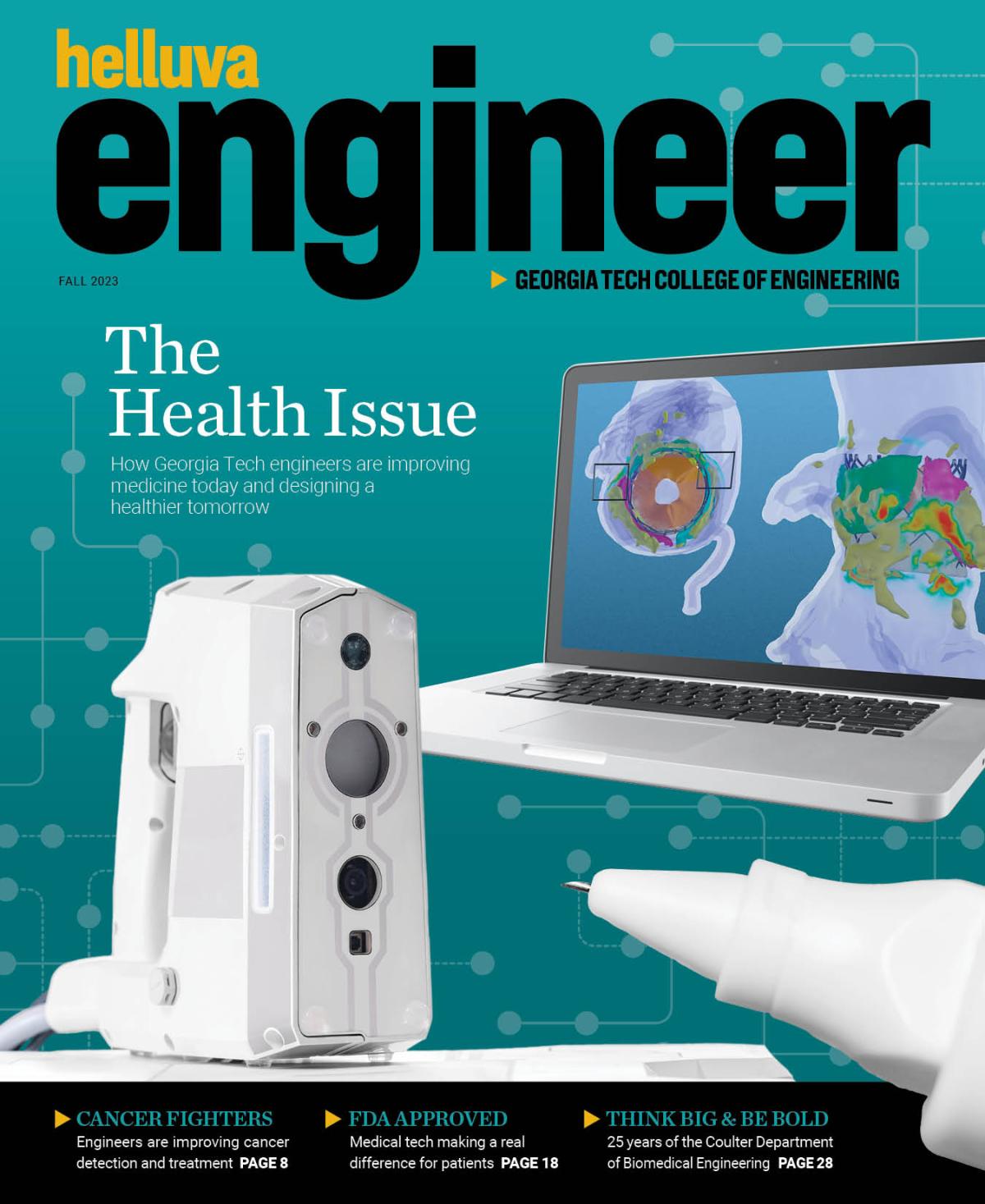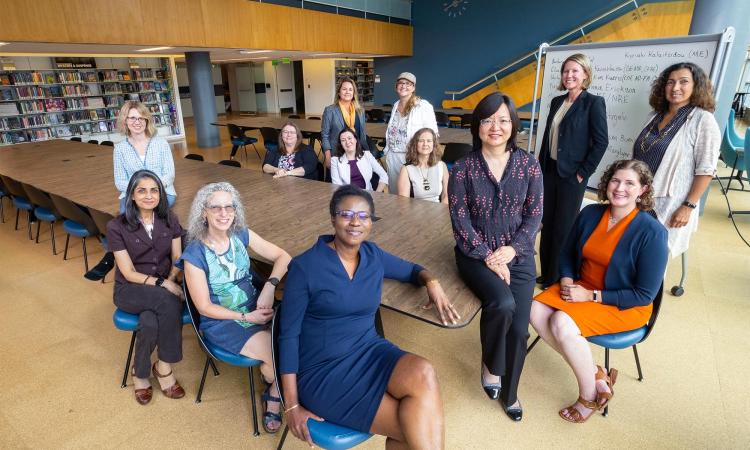AE Professor Karen Feigh is looking to the skies for the future of AI and health.
(text and background only visible when logged in)
A doctor is flying in the back of a helicopter for a daytrip from Atlanta to a rural Georgia county. With more than a third of the state’s counties lacking a pediatrician, according to the Georgia Public Policy Foundation, that doctor’s visit would fill an important void.
The physician takes that trip alone. There is no pilot. She’s ferried back and forth by an autonomously flying rotorcraft vehicle.
It sounds like science fiction, but Karen Feigh can see it happening in the not-so-distant future.
“We’re seeing more automated systems on the road. The next evolution is in the air,” said Feigh, professor in the Daniel Guggenheim School of Aerospace Engineering.
But for a passenger to fly solo with an AI pilot sometime in the next 15 years or so, Feigh and her peers must first understand how people can interact with autonomous machines. And vice versa.

Ph.D. student Richard Agbeyibor, left, and Professor Karen Feigh prepare for a round of tests in their custom-designed medevac simulator.
Feigh is working on a three-year study that brings metro Atlanta emergency medical technicians (EMTs) to campus to interact with automated flying systems during simulated medevac situations.
The EMTs climb into a makeshift aircraft cabin in one of Feigh’s lab spaces, complete with windows that allow them to look outside at a simulated landscape. The machines ask the humans simple questions, such as if they’re ready to take off or if everyone is buckled in before the simulator “flies.” In turn, the people provide feedback to the AI pilot about their hypothetical patient’s health or perhaps the need to change landing spots based on the patient’s vital signs.
“We’re trying a variety of communication methods, such as touchscreens and natural language processing, then watching how each side responds,” Feigh said. “We have seen a huge increase in automated systems — whether they be AI, machine learning, or regular automation — and we’ve seen demonstrations of automated piloting of vehicles, particularly rotorcraft. We just have to better understand how people and machines can work together.”
The initial series of experiments created a very simple system with a touchscreen for the EMTs to interact with the AI systems. It worked pretty well, Feigh said, but participants quickly found it was cumbersome to have to focus on the touchscreen while caring for their patient. A common request was to be able to talk to the AI instead.
Feigh’s next step may be to incorporate natural language processing — the kind of technology that allows us to talk to Alexa, Google, and Siri — but that’s quite a bit more complicated. And it presents other questions: Should passengers be able to ask anything? Or would a “closed” system work better, something not unlike the limited things drivers can say to their car when asking for songs or temperature changes.
And that’s the point: to learn enough so that when manufacturers are ready to implement AI systems into aircraft, her findings will serve as a guide for what works and what isn’t practical.
We have seen a huge increase in automated systems — whether they be AI, machine learning, or regular automation — and we’ve seen demonstrations of automated piloting of vehicles, particularly rotorcraft. We just have to better understand how people and machines can work together.
Karen Feigh
The project is funded by the Office of Naval Research, with an emphasis on search-and-rescue and disaster relief missions. Feigh sees applications beyond transporting soldiers or cargo into dangerous or uncertain areas, including the idea of a doctor flying to remote areas to fill gaps in access to healthcare.
“There’s an active, national interest in trying to alleviate a pilot shortage by creating systems that could fly autonomously. And there are several great reasons for that,” Feigh said. “Having a helicopter pilot on standby is very expensive. If you could get an automated system in place, you could have aircraft on reserve to take off at a moment’s notice. Hospitals also could share in the cost, allowing for greater flexibility in cities and surrounding areas.”
In the near future, Feigh thinks autonomous systems will be added to current rotorcraft along with actuators and other equipment to help those systems operate in their environment. Much like the self-driven car concepts of today, humans still will sit in the cockpit.
Once that happens, and people get more comfortable with the aircraft flying itself, the next step will be fully autonomous aircraft designed and built from scratch — without the controls for a human pilot.
“Before any of that happens, we have to map out what works and what doesn’t. We have to outline an initial, definitive guidance,” said Feigh, who is currently recruiting EMTs for the next phase of the project in spring 2024. “If we can create interfaces to support future technology, we can help define the future of healthcare and autonomous systems.”
(text and background only visible when logged in)
(text and background only visible when logged in)
Related Stories
Seven Decades in the Making: How Women Are Leading the College into the Future
Meet the 14 women, including Karen Feigh, in leadership positions helping chart the College’s course.
(text and background only visible when logged in)

Helluva Engineer
This story originally appeared in the Fall 2023 issue of Helluva Engineer magazine.
With the top biomedical engineering program in the country, it’s only fitting that our rebooted College magazine focuses on health and medicine in our return issue. From cancer to anemia, synthetic biology to eye disease, Georgia Tech engineers are improving medicine today and designing a healthier tomorrow for us all.
